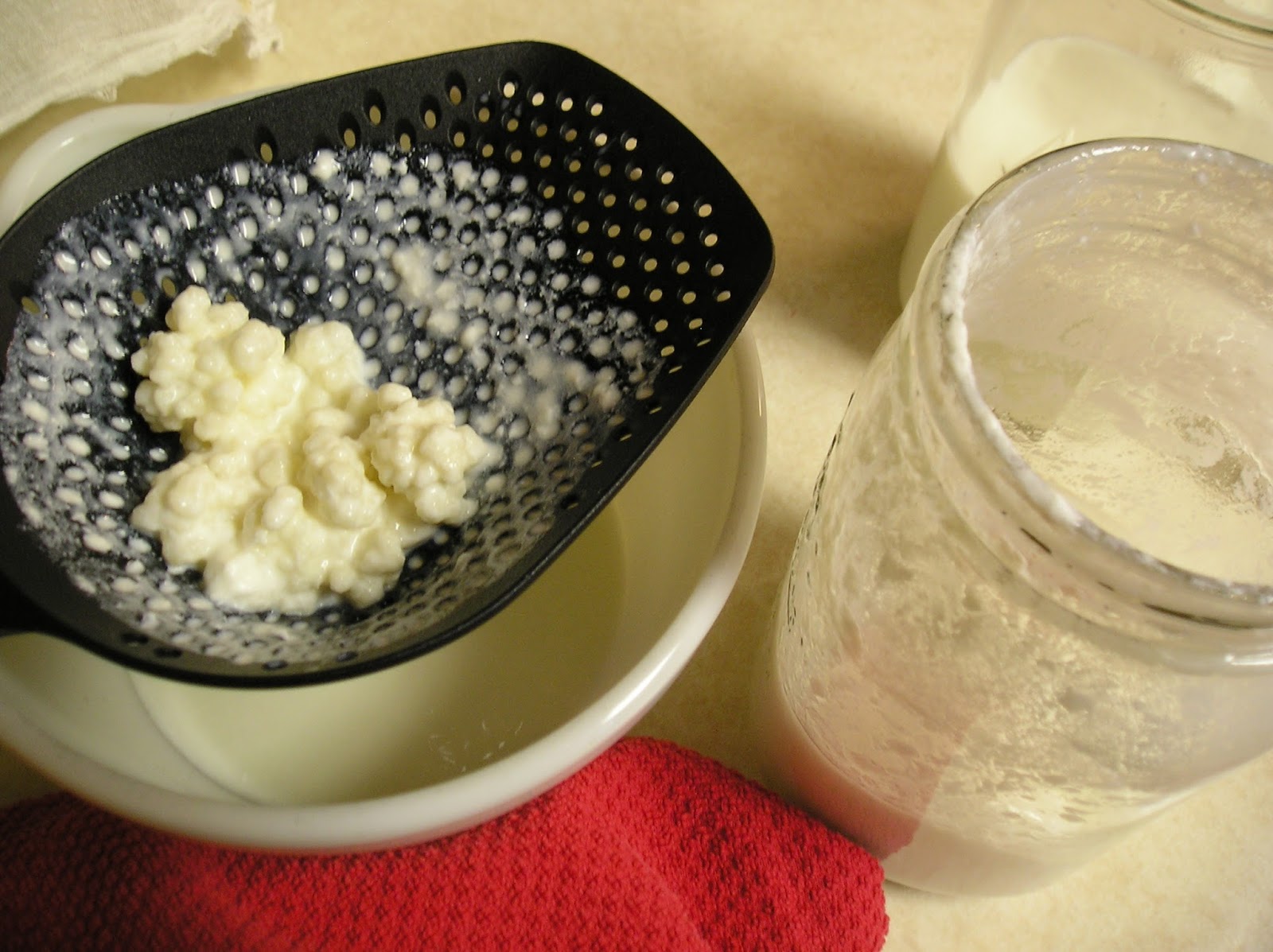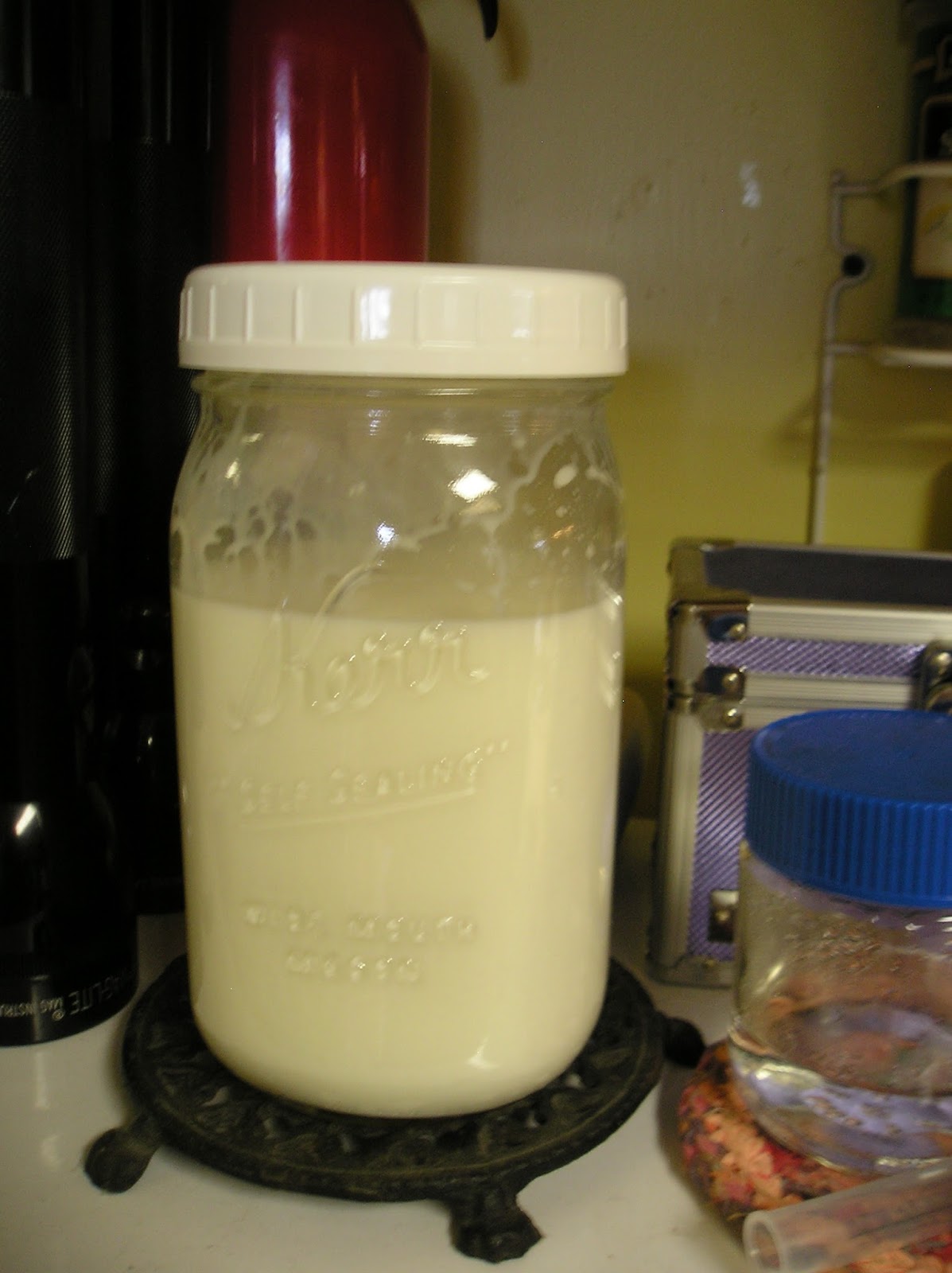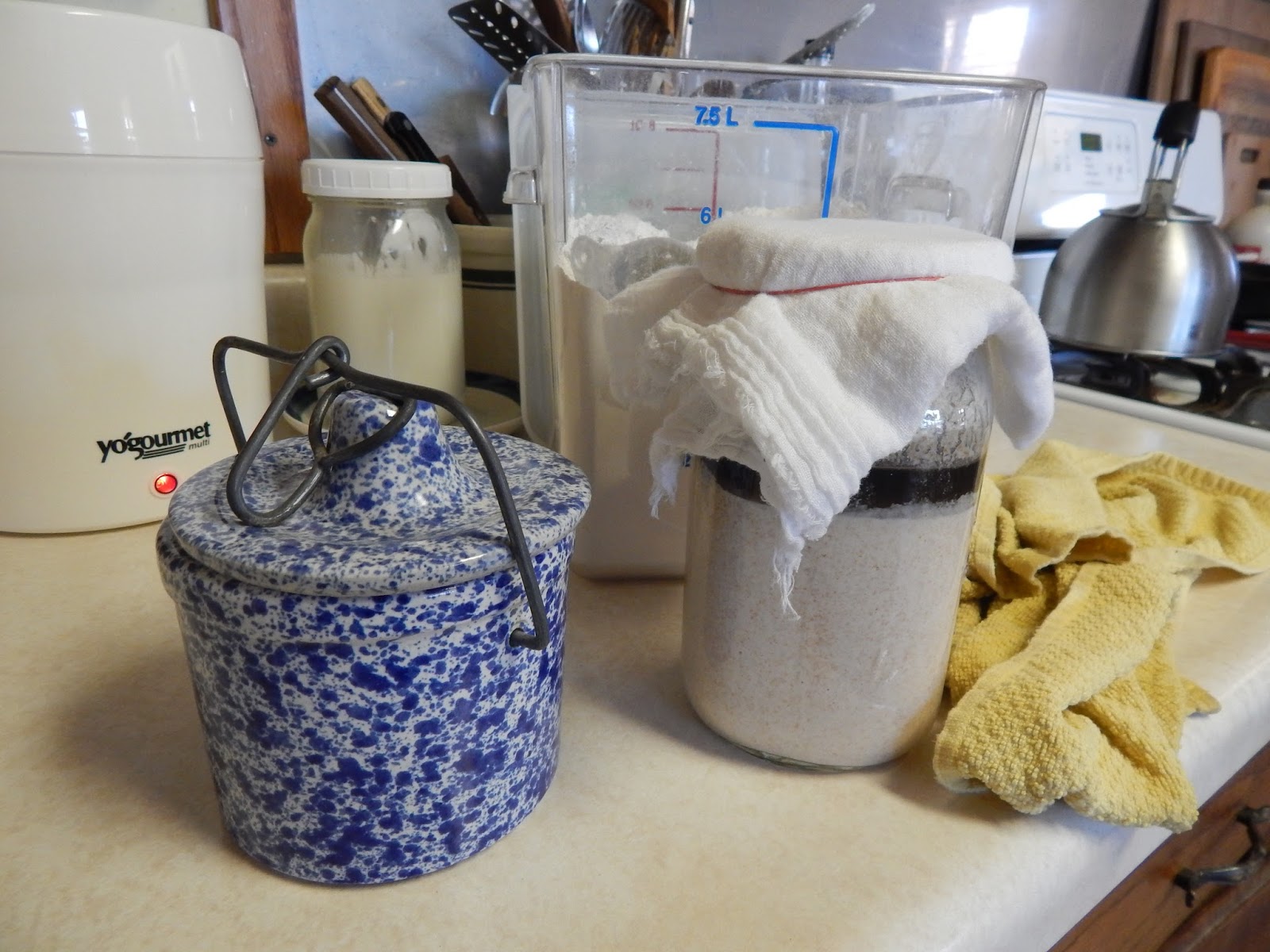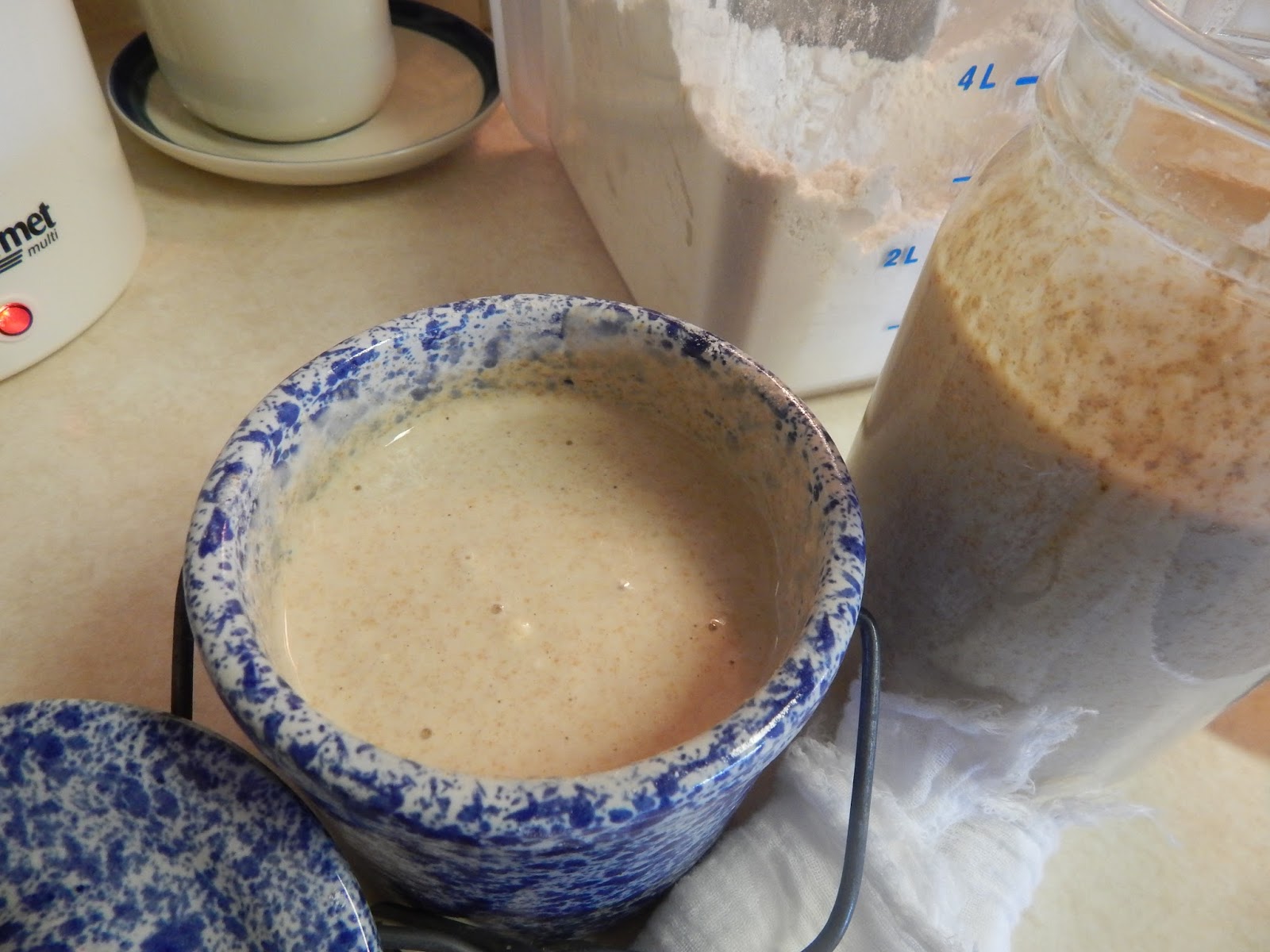| Online: | |
| Visits: | |
| Stories: |

| Story Views | |
| Now: | |
| Last Hour: | |
| Last 24 Hours: | |
| Total: | |
Feeding Kefir & Sourdough
One of my new Saturday chores is feeding my starters – sourdough and kefir grains. They will actually be okay for about two weeks, but I am trying to make it a weekly chore to make sure I don't let them die. It a simple process and doesn't take long.
I have kept some extra kefir grains, just in case. The ones I use daily, and keep on the counter, grow much faster than I expected. I take some of them out at least once a week to limit the amount of grains to about a tablespoon and a half. The extras, I feed to the chickens.
To feed the extra grains that I keep in the frig, first I strain them out. If there are too many grains that have grown over the week, I take them out and put them in the scrap bucket for the chickens. I also feed the chickens the milk that was on the stored kefir. The dog doesn't really care for it.
Then I put the 'keeper' grains in a clean jar and put about two and a half cups of fresh milk over them. I keep a piece of tape on top of the jar and mark the date each time I feed them, so I can keep track of myself.
Next, I feed the sourdough starter which is a leavening agent used in place of yeast when making bread. I have two batches going. One that is more white flour and one that is almost exclusively fresh ground wheat. As a sourdough starter sits, it will ferment and make alcohol. As this happens, a layer of liquid will form on top of the flour part of the starter, and it gets rather dark. The first time I fed these starters after being in the frig for a week I was surprised. So back to my reading I went. As long as the liquid on top is not red, it's okay. A brownish or blackish color is normal.
It's simple to feed them. Just add about 1/2 cup flour of your choice and stir well. The consistency should stay about the same thickness as pancake batter. Add filtered water as needed to maintain the consistency.
If you plan to make bread this is a good time to use up your old starter by making a sponge out of it. Once the sponge has set out overnight and rejuvenated, put a cup of it back in the frig for next time. I find that if I don't make bread very often the amount of starter in the frig grows over time. If I didn't plan to make bread for a while I would have to either share some or throw some out so I could continue feeding it. I don't want to have a gallon of starter, I would never use that much. Sourdough has to be able to breathe. The blue crock does not seal, so it works well. On the quart jar, I use a piece of cheese cloth and hold it on with a rubber band. When I make a sponge, I use a stoneware bowl, a wooden spoon and cover it all with a tea towel. Neither kefir nor sourdough like metal, so I avoid these utensils and bowls.
I know I've said it before, but having these live cultures on hand that can perpetually provide a source of nutrition for us brings me satisfaction. I appreciate the opportunity to learn more about providing for us in a sustainable way. Learn all you can.
Until next time – Fern
Source: http://thoughtsfromfrankandfern.blogspot.com/2014/02/feeding-kefir-sourdough.html










